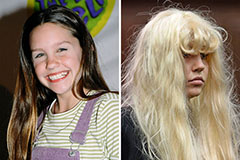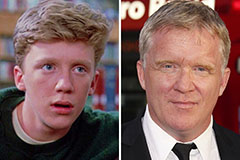Red Wigglers: The Unsung Heroes of Organic Waste Recycling
Red wigglers, or Eisenia fetida, act as important agents in the natural waste recycling procedure, transforming thrown out products right into useful vermicompost. Their reliable breakdown of raw material not only boosts soil high quality yet likewise adds to lasting waste administration methods. As the world increasingly seeks options to fight waste buildup and boost agricultural performance, comprehending the duty of these worms becomes vital. What mechanisms allow them to thrive in garden compost settings, and how can they be efficiently used in both property and business settings? Exploring these questions exposes the wider ramifications of vermicomposting in our ecological landscape.
What Are Red Wigglers?
The amazing resilience of red wigglers, medically understood as Eisenia fetida, underscores their essential role in natural waste recycling. These small, reddish-brown earthworms are commonly discovered in disintegrating raw material, such as compost stacks and manure stacks. Lake Hickory Bait. Unlike various other earthworm species, red wigglers grow in nutrient-rich environments and are very effective at breaking down organic materials, making them vital for vermicomposting

(Red Wiggler Express)Along with their function in waste decrease, red wigglers add to soil health by improving soil framework and oygenation via their delving activities (Lake Hickory Bait). Their existence in composting systems not just boosts disintegration prices yet also advertises a sustainable technique to throw away management, illustrating their relevance in ecological conservation efforts
Benefits of Composting With Worms
Composting with worms, especially red wigglers, supplies numerous advantages that enhance both waste administration and soil health and wellness. These worms effectively break down organic waste, converting it into nutrient-rich vermicompost that enriches soil. This process increases disintegration, permitting for a much faster recycling of cooking area scraps and other natural materials compared to conventional composting techniques.
Additionally, the vermicompost created by red wigglers is brimming with valuable microbes, which aid improve soil structure, oygenation, and dampness retention. This improves the general health and wellness of plants, advertising energetic growth and increased yields in yards and farming settings. The usage of worms in composting lessens the production of greenhouse gases, such as methane, adding to a much more sustainable waste administration system.

Exactly How to Beginning Vermicomposting
Establishing a vermicomposting system is a simple procedure that can produce considerable benefits for both waste management and soil enrichment. To begin, pick an appropriate container, such as a plastic container or wood box, with ample air flow holes to make certain correct airflow. The dimensions ought to ideally be about 2 feet by 3 feet, permitting enough space for the worms to grow.
Following, prepare bed linens product, which can contain shredded newspaper, cardboard, or coconut coir. This bed linen must be moistened to create a suitable habitat for the worms. As soon as the bedding is in place, introduce red wigglers (Eisenia fetida) right into the container, generally around one pound of worms for every square foot of surface area.
Following the placement of worms, include natural waste, such as vegetables and fruit scraps, coffee grounds, and crushed eggshells. Avoid adding milk, meat, or oils, as these can create odors and attract parasites. Position the bin in a shaded, temperature-controlled location to maintain optimum conditions for worm activity. With these actions, you will successfully launch a vermicomposting system that adds to lasting waste monitoring and improves your soil.
Preserving a Healthy Worm Bin
(Red Wiggler Express)Keeping a worm container growing calls for regular focus and treatment to make sure the health and wellness of the red wigglers and the efficiency of the composting procedure. Appropriate upkeep starts with keeping track of the wetness levels; the container must perspire but not saturated. An excellent guideline of thumb is to keep an uniformity comparable to a wrung-out sponge.
Gently mixing the bed linen and food scraps every couple of weeks avoids compaction and makes sure that all worms have access to oxygen. In addition, it is important to feed the worms appropriately.
Temperature guideline is another essential aspect. Red wigglers flourish in a series of 55 to 77 levels Fahrenheit. If the bin ends up being as well warm or cool, the worms might become stressed - Lake Hickory Bait. Occasionally check for signs of health, such as worm populace development and the presence of healthy and balanced spreadings. By carefully managing these factors, one can maintain a durable and effective worm bin.
Effect On Lasting Living
The effective maintenance of a worm bin not only benefits the wellness of red wigglers yet likewise contributes considerably to lasting living methods. By visit our website recycling natural waste, such as cooking area scraps and lawn debris, red wigglers help divert significant quantities of material from land fills. This reduction in waste not only reduces greenhouse gas discharges however also minimizes the environmental burden related to waste administration.
Additionally, the castings produced by red wigglers work as a nutrient-rich natural fertilizer, boosting soil wellness and advertising plant growth. This all-natural option to chemical plant foods sustains sustainable farming and gardening practices, lowering reliance on synthetic inputs that can harm ecosystems. In addition, worm composting cultivates understanding of waste management, encouraging individuals and communities to embrace more lasting routines.

Verdict
In recap, red wigglers act as vital contributors to organic waste recycling via their effective decay of natural products. Their capacity to generate nutrient-rich vermicompost enhances dirt health and wellness and supports sustainable agricultural methods. By integrating vermicomposting right into waste monitoring strategies, individuals and communities can dramatically decrease waste while advertising environmental sustainability. The role of Eisenia fetida in fostering healthy and balanced environments underscores the importance of these organisms in achieving lasting living and boosting dirt fertility.
 Neve Campbell Then & Now!
Neve Campbell Then & Now! Amanda Bynes Then & Now!
Amanda Bynes Then & Now! Anthony Michael Hall Then & Now!
Anthony Michael Hall Then & Now! James Van Der Beek Then & Now!
James Van Der Beek Then & Now! Mason Reese Then & Now!
Mason Reese Then & Now!